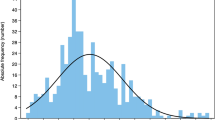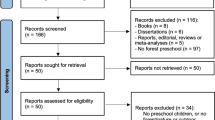Abstract
Purpose: ASD is associated with relative strengths in the visuospatial domain but varying abilities in the linguistic domain. Previous studies suggest parallels between spatial language and spatial cognition in older autistic individuals, but no research to date has examined this relationship in young autistic children. Therefore, the purpose of the present study was to investigate the connection between children’s spatial language production and nonverbal spatial cognition over time. We also examined two potential predictors of spatial language observed in previous literature, ASD symptom severity and parent spatial language input. Methods: In past work investigating spatial language in NT children of the same age, parent-child interactions have been a primary context for study. Therefore, in the present study, we analyzed transcripts of dyadic naturalistic play interactions between autistic children and their parents over three visits from age 30 to 66 months and administered standardized cognitive and ASD diagnostic assessments at each visit. Results: Spatial language production was related to nonverbal spatial cognition even when accounting for overall language production, though the strength of that relationship decreased over time. Parent spatial input (but not ASD severity) significantly predicted children’s spatial language production over and above the effect of overall language production. Conclusion: Spatial language is associated with spatial cognition in young autistic children and appears to reflect the interaction of overall linguistic skills and nonverbal spatial cognitive ability regardless of autism severity. Parent-mediated interventions may be a promising context for increasing spatial language in autistic preschoolers.


Similar content being viewed by others
References
Akshoomoff, N. (2006). Use of the Mullen Scales of early learning for the assessment of young children with autism spectrum disorders. Child Neuropsychology, 12(4–5), 269–277.
Anderson, D. K., Lord, C., Risi, S., DiLavore, P. S., Shulman, C., Thurm, A., Welch, K., & Pickles, A. (2007). Patterns of growth in Verbal Abilities among Children with Autism Spectrum Disorder. Journal of Consulting and Clinical Psychology, 75(4), 594–604.
American Psychiatric Association (2000). Diagnostic and statistical manual of mental disorders (4th ed., text rev.). Washington, DC: Author.
American Psychiatric Association (2013). Diagnostic and statistical manual of mental disorders (5th ed.). https://doi.org/10.1176/appi.books.9780890425596
Arunachalam, S., & Luyster, R. J. (2018). Lexical development in young children with autism spectrum disorder (ASD): how ASD may affect intake from the input. Journal of Speech Language and Hearing Research, 61(11), 2659–2672.
Bang, J., & Nadig, A. (2015). Learning language in autism: maternal linguistic input contributes to later vocabulary. Autism Research, 8(2), 214–223.
Barr, D. J., Levy, R., Scheepers, C., & Tily, H. J. (2013). Random effects structure for confirmatory hypothesis testing: keep it maximal. Journal of Memory and Language, 68(3), 255–278.
Bates, D., Mächler, M., Bolker, B., & Walker, S. (2015). Fitting Linear Mixed-Effects Models using lme4. Journal of Statistical Software, 67(1), 1–48.
Bochynska, A., Coventry, K. R., Vulchanov, V., & Vulchanova, M. (2020). Tell me where it is: selective difficulties in spatial language on the autism spectrum. Autism, 24(7), 1740–1757.
Bochynska, A., Vulchanova, M., Vulchanov, V., & Landau, B. (2020). Spatial language difficulties reflect the structure of intact spatial representation: Evidence from high-functioning autism. Cognitive Psychology, 116 (November 2019), 101249.
Borriello, G. A., & Liben, L. S. (2018). Encouraging maternal Guidance of Preschoolers’ spatial thinking during Block Play. Child Development, 89(4), 1209–1222.
Brignell, A., Williams, K., Jachno, K., Prior, M., Reilly, S., & Morgan, A. T. (2018). Patterns and predictors of Language Development from 4 to 7 years in Verbal Children with and without Autism Spectrum Disorder. Journal of Autism and Developmental Disorders, 48(10), 3282–3295.
Cannon, J., Levine, S., & Huttenlocher, J. (2007). A system for analyzing children and caregivers’ language about space in structured and unstructured contexts. Spatial Intelligence and Learning Center (SILC) technical report.
Cartmill, E. A., Pruden, S. M., Levine, S. C., & Goldin-Meadow, S. (2010). The role of parent gesture in children’s spatial language development. Proceedings of the 34th Annual Boston University Conference on Language Development, March, 70–77.
Carpenter, J. R., & Smuk, M. (2021). Missing data: a statistical framework for practice. Biometrical Journal, 63(5), 915–947.
Casasola, M. (2018). Above and beyond objects: the development of Infants’ spatial concepts. Advances in Child Development and Behavior (1st ed., 54 vol.). Elsevier Inc.
Davidson, M. M., & Ellis Weismer, S. (2014). Characterization and prediction of early reading abilities in children on the autism spectrum. Journal of Autism and Developmental Disorders, 44(4), 828–845.
Edgin, J. O., & Pennington, B. F. (2005). Spatial cognition in autism spectrum disorders: Superior, impaired, or just intact? Journal of Autism and Developmental Disorders, 35(6), 729–745.
Eigsti, I. M., De Marchena, A. B., Schuh, J. M., & Kelley, E. (2011). Language acquisition in autism spectrum disorders: a developmental review. Research in Autism Spectrum Disorders, 5(2), 681–691.
Ellis Weismer, S., & Kover, S. T. (2015). Preschool language variation, growth, and predictors in children on the autism spectrum. Journal of Child Psychology and Psychiatry and Allied Disciplines, 56(12), 1327–1337.
Ferrara, K., Hirsh-Pasek, K., Newcombe, N. S., Golinkoff, R. M., & Lam, W. S. (2011). Block Talk: spatial Language during Block Play. Mind Brain and Education, 5(3), 143–151.
Gentner, D., Özyürek, A., Gürcanli, Ö., & Goldin-Meadow, S. (2013). Spatial language facilitates spatial cognition: evidence from children who lack language input. Cognition, 127(3), 318–330.
Gotham, K., Pickles, A., & Lord, C. (2009). Standardizing ADOS scores for a measure of severity in autism spectrum disorders. Journal of Autism and Developmental Disorders, 39(5), 693–705.
Gotham, K., Risi, S., Pickles, A., & Lord, C. (2006). The Autism Diagnostic Observation Schedule (ADOS). Journal of Autism and Developmental Disorders.
Hellendoorn, A., Wijnroks, L., van Daalen, E., Dietz, C., Buitelaar, J. K., & Leseman, P. (2015). Motor functioning, exploration, visuospatial cognition and language development in preschool children with autism. Research in Developmental Disabilities, 39, 32–42.
Hermer-Vazquez, L., Moffet, A., & Munkholm, P. (2001). Language, space, and the development of cognitive flexibility in humans: the case of two spatial memory tasks. Cognition, 79(3), 263–299.
Hund, A. M., Kannass, K. N., Bove, R., Fairweather, L., Maydew, M., & Monla, A. (2021). Young children’s understanding of ordinal and spatial labels. Cognitive Development, 58(July 2020), 101041.
Janvier, D., Choi, Y. B., Klein, C., Lord, C., & Kim, S. H. (2022). Brief report: examining test-retest reliability of the autism diagnostic observation schedule (ADOS-2) calibrated severity scores (CSS). Journal of Autism and Developmental Disorders, 52(3), 1388–1394.
Kim, S. H., Thurm, A., Shumway, S., & Lord, C. (2013). Multisite study of new autism diagnostic interview-revised (ADI-R) algorithms for toddlers and young preschoolers. Journal of Autism and Developmental Disorders, 43(7), 1527–1538.
Kuschner, E. S., Bennetto, L., & Yost, K. (2007). Patterns of nonverbal cognitive functioning in young children with autism spectrum disorders. Journal of Autism and Developmental Disorders, 37(5), 795–807.
Landau, B., & Hoffman, J. E. (2005). Parallels between spatial cognition and spatial language: evidence from Williams syndrome. Journal of Memory and Language, 53(2), 163–185.
Loewenstein, J., & Gentner, D. (2005). Relational language and the development of relational mapping. Cognitive Psychology, 50(4), 315–353.
Luyster, R., Gotham, K., Guthrie, W., Coffing, M., Petrak, R., Pierce, K., Bishop, S., Esler, A., Hus, V., Oti, R., Richler, J., Risi, S., & Lord, C. (2009). The autism diagnostic observation schedule - toddler module: a new module of a standardized diagnostic measure for autism spectrum disorders. Journal of Autism and Developmental Disorders, 39(9), 1305–1320.
Majid, A., Bowerman, M., Kita, S., Haun, D. B. M., & Levinson, S. C. (2004). Can language restructure cognition? The case for space. Trends in Cognitive Sciences, 8(3), 108–114.
Miller, H. E., Andrews, C. A., & Simmering, V. R. (2020). Speech and gesture production provide unique insights into Young Children’s spatial reasoning. Child Development, 91(6), 1934–1952.
Miller, J., & Iglesias, A. (2012). Systematic analysis of Language transcripts (SALT), Research Version 2012 [Computer Software]. Middleton, WI: SALT Software, LLC.
Miller, H. E., & Simmering, V. R. (2018). Children’s attention to task-relevant information accounts for relations between language and spatial cognition. Journal of Experimental Child Psychology, 172, 107–129.
Mullen, E. M. (1995). Mullen Scales of Early Learning (AGS ed.). Circle Pines, MN: American Guidance Service Inc.
Perkins, M. R., Dobbinson, S., Boucher, J., Bol, S., & Bloom, P. (2006). Lexical knowledge and lexical use in autism. Journal of Autism and Developmental Disorders, 36(6), 795–805.
Polinsky, N., Perez, J., Grehl, M., & McCrink, K. (2017). Encouraging spatial talk: using children’s museums to bolster spatial reasoning. Mind Brain and Education, 11(3), 144–152.
Pritulsky, C., Morano, C., Odean, R., Bower, C., Hirsh-Pasek, K., & Golinkoff, M., R (2020). Spatial thinking: why it belongs in the preschool classroom. Translational Issues in Psychological Science, 6(3), 271–282.
Pruden, S. M., & Levine, S. C. (2017). Parents’ spatial Language mediates a sex difference in Preschoolers’ Spatial-Language Use. Psychological Science, 28(11), 1583–1596.
Pruden, S. M., Levine, S. C., & Huttenlocher, J. (2011). Children’s spatial thinking: does talk about the spatial world matter? Developmental Science, 14(6), 1417–1430.
Pyers, J. E., Shusterman, A., Senghas, A., Spelke, E. S., & Emmorey, K. (2010). Evidence from an emerging sign language reveals that language supports spatial cognition. Proceedings of the National Academy of Sciences of the United States of America, 107(27), 12116–12120.
Ray-Subramanian, C. E., & Ellis Weismer, S. (2012). Receptive and expressive language as predictors of restricted and repetitive behaviors in young children with autism spectrum disorders. Journal of Autism and Developmental Disorders, 42(10), 2113–2120.
RStudio Team, & RStudio (2020). RStudio: Integrated Development Environment for R. Boston, MA: PBC.
Sameroff, A. J., & Fiese, B. H. (2000). Transactional regulation: the developmental ecology of early intervention. Handbook of early childhood intervention, 2(4), 135.
Shumway, S., Farmer, C., Thurm, A., Joseph, L., Black, D., & Golden, C. (2012). The ADOS calibrated severity score: relationship to phenotypic variables and stability over time. Autism Research, 5(4), 267–276.
Simms, N. K., & Gentner, D. (2019). Finding the middle: spatial language and spatial reasoning. Cognitive Development, 50(April), 177–194.
Stevenson, J. L., & Gernsbacher, M. A. (2013). Abstract Spatial Reasoning as an Autistic Strength. PLoS ONE, 8(3).
Tager-Flusberg, H. (2016). Risk factors Associated with Language in Autism Spectrum Disorder: clues to underlying mechanisms. Journal of Speech Language and Hearing Research, 59, 143–154.
Uttal, D. H., Miller, D. I., & Newcombe, N. S. (2013). Exploring and enhancing spatial thinking: links to achievement in Science, Technology, Engineering, and Mathematics? Current Directions in Psychological Science, 22(5), 367–373.
Venker, C. E., Ray-Subramanian, C. E., Bolt, D. M., & Ellis Weismer, S. (2014). Trajectories of autism severity in early childhood. Journal of Autism and Developmental Disorders, 44(3), 546–563.
Verdine, B. N., Golinkoff, R. M., Hirsh-Pasek, K., Newcombe, N. S., Filipowicz, A. T., & Chang, A. (2014). Deconstructing Building Blocks: preschoolers’ spatial assembly performance relates to Early Mathematical Skills. Child Development, 85(3), 1062–1076.
Weist, R. M., Lymburner, N. L., Piotrowski, S., & Stoddard, J. L. (2000). Spatial complexity in children’s language. Perceptual and Motor Skills, 91(2), 425–434.
Wu, D., Li, H., & Degotardi, S. (2022). Early spatial language development and education: a scoping review. SN Social Sciences (2 vol.). Issue 2). Springer International Publishing.
Zimmerman, I. L., Steiner, V. G., & Pond, R. E. (2002). Preschool Language Scale, Fourth Edition (PLS-4) [Database record]. APA PsycTests.
Author information
Authors and Affiliations
Corresponding author
Additional information
Publisher’s Note
Springer Nature remains neutral with regard to jurisdictional claims in published maps and institutional affiliations.
Rights and permissions
Springer Nature or its licensor (e.g. a society or other partner) holds exclusive rights to this article under a publishing agreement with the author(s) or other rightsholder(s); author self-archiving of the accepted manuscript version of this article is solely governed by the terms of such publishing agreement and applicable law.
About this article
Cite this article
Prescott, K.E., Crespo, K. & Ellis Weismer, S. Spatial Language and Cognition in Autistic Preschoolers. J Autism Dev Disord 54, 1376–1388 (2024). https://doi.org/10.1007/s10803-022-05883-7
Accepted:
Published:
Issue Date:
DOI: https://doi.org/10.1007/s10803-022-05883-7




